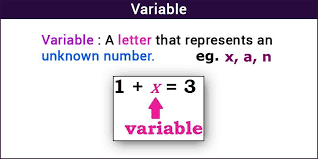Do you ever wonder about the mysterious ‘X’ that seems to hold the key to unlocking the secrets of mathematical equations?
It’s not just a placeholder – it’s a powerful tool that can transform the way you approach problem-solving.
From algebraic expressions to real-world applications, understanding the role of ‘X’ can lead you down a path of mathematical mastery that will reshape your perspective on numbers and their relationships.
Get ready to unravel the enigma of ‘X’ and discover the endless possibilities it holds in the realm of mathematics.
The Basics of Variables
Understanding mathematical variables begins by recognizing that they represent unknown values in equations, playing a crucial role in solving mathematical problems. When you encounter variables like ‘x’ or ‘y’ in math, think of them as placeholders for numbers that we need to find. These letters can stand for any value, allowing flexibility in problem-solving. By assigning different values to these variables, you can manipulate equations to determine the unknown quantities. Variables are the building blocks of algebra, enabling you to express relationships between quantities and solve complex problems efficiently.
As you delve deeper into mathematics, you’ll encounter various types of variables, such as independent variables that you can manipulate and dependent variables that change based on the independent ones. Understanding how these variables interact is key to grasping advanced mathematical concepts. Variables aren’t just letters on a page; they’re tools that mathematicians use to unlock the secrets hidden within equations. Embrace variables as your allies in the journey through mathematical landscapes.
Role of ‘X’ in Equations
To understand the role of ‘X’ in equations, consider how this variable serves as a key element in determining unknown values and relationships within mathematical expressions. In algebraic equations, ‘X’ represents an unknown quantity that we aim to find. It acts as a placeholder for a value that needs to be solved for to make the equation true.
By manipulating equations containing ‘X’, you can uncover the value of ‘X’ and thus solve for the unknown. This process is fundamental in mathematics as it enables us to find solutions to real-world problems, model relationships between variables, and make predictions based on given information.
‘X’ allows us to express complex relationships in a concise and structured manner, making it easier to work with mathematical problems efficiently. Understanding the role of ‘X’ in equations is crucial for mastering algebra and higher-level mathematics, as it forms the basis for solving a wide range of mathematical problems.
Solving Equations With ‘X
When solving equations with ‘X’, you must isolate the variable to find its value. This process involves performing operations on both sides of the equation to simplify it until ‘X’ is alone on one side. For example, in the equation 2X + 5 = 11, you’d first subtract 5 from both sides to get 2X = 6. Then, by dividing by 2, you find that X equals 3. Remember to perform the same operation on both sides of the equation to maintain equality.
It’s essential to follow the order of operations when solving equations with ‘X’. Start by simplifying within parentheses, then solve exponents, followed by multiplication and division from left to right, and finally addition and subtraction from left to right. Keeping track of each step ensures accuracy in finding the value of ‘X’.
Practice solving various equations to become comfortable with isolating ‘X’. This skill is fundamental in algebra and lays the foundation for more complex problem-solving in mathematics.
Graphing ‘X’ in Functions
When graphing ‘X’ in functions, remember to plot points on a coordinate plane to visualize the relationship between the variable and the function. By assigning different values to ‘X’ and calculating the corresponding output of the function, you can create a series of points that, when plotted, form a graphical representation of the function.
Start by selecting a range of values for ‘X’ that you want to examine. Substituting these values into the function will give you the corresponding ‘Y’ values. Plot each pair of ‘X’ and ‘Y’ values on the coordinate plane. Once you have plotted several points, you can connect them to reveal the shape of the function.
Graphing ‘X’ in functions allows you to see patterns, identify key points such as intercepts and extrema, and understand how the function behaves across different inputs. This visual representation can provide insights into the behavior of the function that may not be immediately apparent from the algebraic expression alone.
Applications of ‘X’ in Real Life
Exploring real-life scenarios often involves applying various values to ‘X’ to analyze how functions interact with practical situations.
In everyday life, ‘X’ serves as a placeholder for unknown quantities that can be solved using mathematical equations. For instance, when planning a budget, you might use ‘X’ to represent the amount of money you can spend on groceries each month after paying bills. By setting up an equation where total income minus expenses equals the grocery budget (‘X’), you can find the optimal amount to allocate.
Similarly, in fields like engineering, ‘X’ can symbolize variables such as distance, time, or velocity in complex formulas to design structures or solve mechanical problems. Understanding the role of ‘X’ in real-life applications enables you to make informed decisions based on mathematical models and data analysis.
Whether managing finances, predicting trends, or optimizing processes, the versatility of ‘X’ empowers you to tackle diverse challenges with precision and logic.
Conclusion
So, now you understand the importance of the variable ‘x’ in mathematical expressions.
From its basic role in equations to its application in real life scenarios, ‘x’ is a fundamental component in the world of mathematics.
Keep practicing solving equations and graphing functions with ‘x’ to deepen your understanding and improve your mathematical skills.
Remember, ‘x’ isn’t just a letter, but a powerful tool in solving and understanding mathematical problems.
